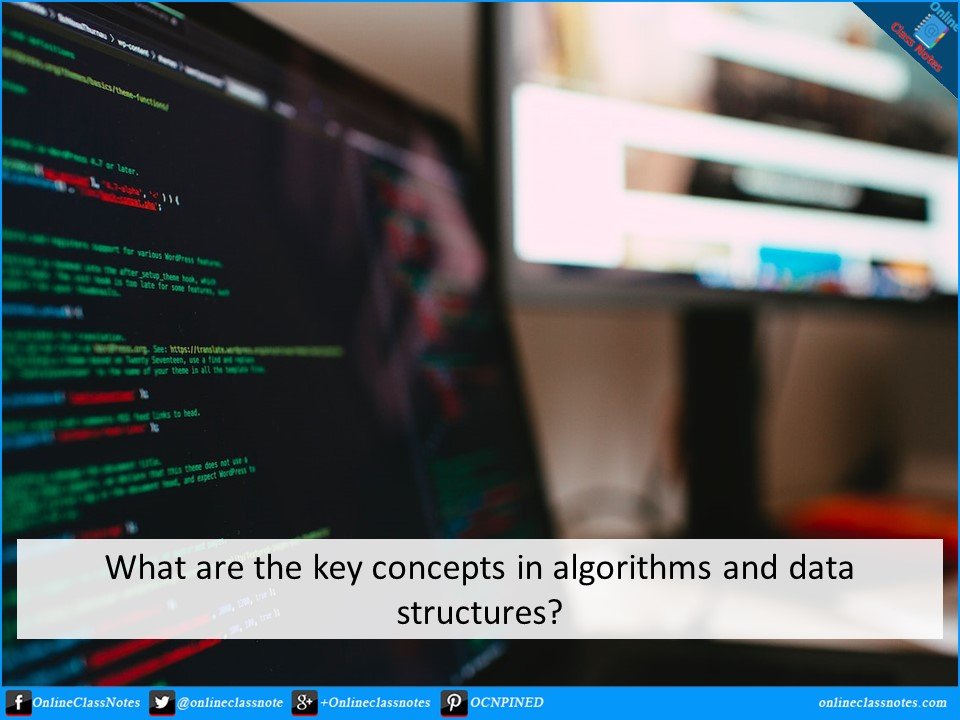Algorithms and data structures are fundamental components in computer science and play a crucial role in solving complex problems efficiently. Understanding the key concepts in algorithms and data structures is essential for designing and implementing efficient software solutions. In this comprehensive answer, we will delve into the main concepts underlying algorithms and data structures.
Algorithms
An algorithm is a step-by-step procedure for solving a specific problem or accomplishing a task. It is a well-defined set of instructions that takes input, processes it, and produces the desired output. The key concepts in algorithms include:
1. Efficiency
Algorithms aim to solve problems efficiently, considering factors such as time and space complexity. The efficiency of an algorithm is determined by its runtime, the amount of memory it consumes, and the resources it requires.
2. Correctness
An algorithm should produce the correct output for all possible inputs within its domain. Achieving correctness involves rigorous testing, verification, and validation techniques.
3. Recursion
Recursion is a technique in which a function solves a problem by calling itself with a smaller or simpler input. Recursive algorithms have a base case that terminates the recursion and one or more recursive cases that reduce the problem size.
4. Divide and Conquer
Divide and conquer is a technique that involves breaking down a problem into smaller subproblems, solving them independently, and combining the solutions to obtain the final result. Merge sort and quicksort are classic examples of divide and conquer algorithms.
5. Dynamic Programming
Dynamic programming is an optimization technique used for solving problems with overlapping subproblems. It involves breaking down the problem into smaller overlapping subproblems, solving them once, and storing their solutions to avoid redundant computations. Fibonacci sequence calculation using memoization is a common example of dynamic programming.
Data Structures
Data structures are containers or formats used to organize and store data effectively, facilitating efficient manipulation and retrieval. They provide a systematic way to represent and manage data. The key concepts in data structures include:
1. Arrays
Arrays are a fundamental data structure that stores a fixed-size sequence of elements of the same type. Elements in an array are accessed using their index, and arrays offer constant-time random access. However, resizing arrays can be costly.
2. Linked Lists
Linked lists are dynamic data structures in which elements, called nodes, are connected through pointers. Each node contains the data and a reference to the next node. Linked lists provide efficient insertion and deletion operations but have slower random access compared to arrays.
3. Stacks
A stack is a Last-In-First-Out (LIFO) data structure that stores elements in a sequential manner. Elements can be added or removed only from the top, resembling a stack of objects. Stacks are commonly used for function call tracking, expression evaluation, and backtracking.
4. Queues
A queue is a First-In-First-Out (FIFO) data structure that stores elements in a sequential manner. Elements can be inserted at the rear and removed from the front. Queues are commonly used in scheduling, resource allocation, and breadth-first search algorithms.
5. Trees
Trees are hierarchical data structures composed of nodes connected by edges. They have a root node, internal nodes, and leaf nodes. Trees are used to represent hierarchical relationships and are the basis for various data structures such as binary trees, AVL trees, and B-trees.
6. Graphs
Graphs are non-linear data structures consisting of nodes (vertices) and edges that connect them. Graphs can be directed or undirected and are used to model relationships between objects. Graph algorithms are vital in various domains, including social networks, routing, and optimization.
7. Hash Tables
Hash tables (or hash maps) are data structures that store key-value pairs, allowing efficient insertion, deletion, and retrieval operations. They use a hash function to map keys to array indices, providing constant-time access on average.
These concepts provide a foundation for understanding algorithms and data structures. By applying these concepts effectively, programmers can develop efficient and scalable software solutions to tackle a wide range of computational problems.
